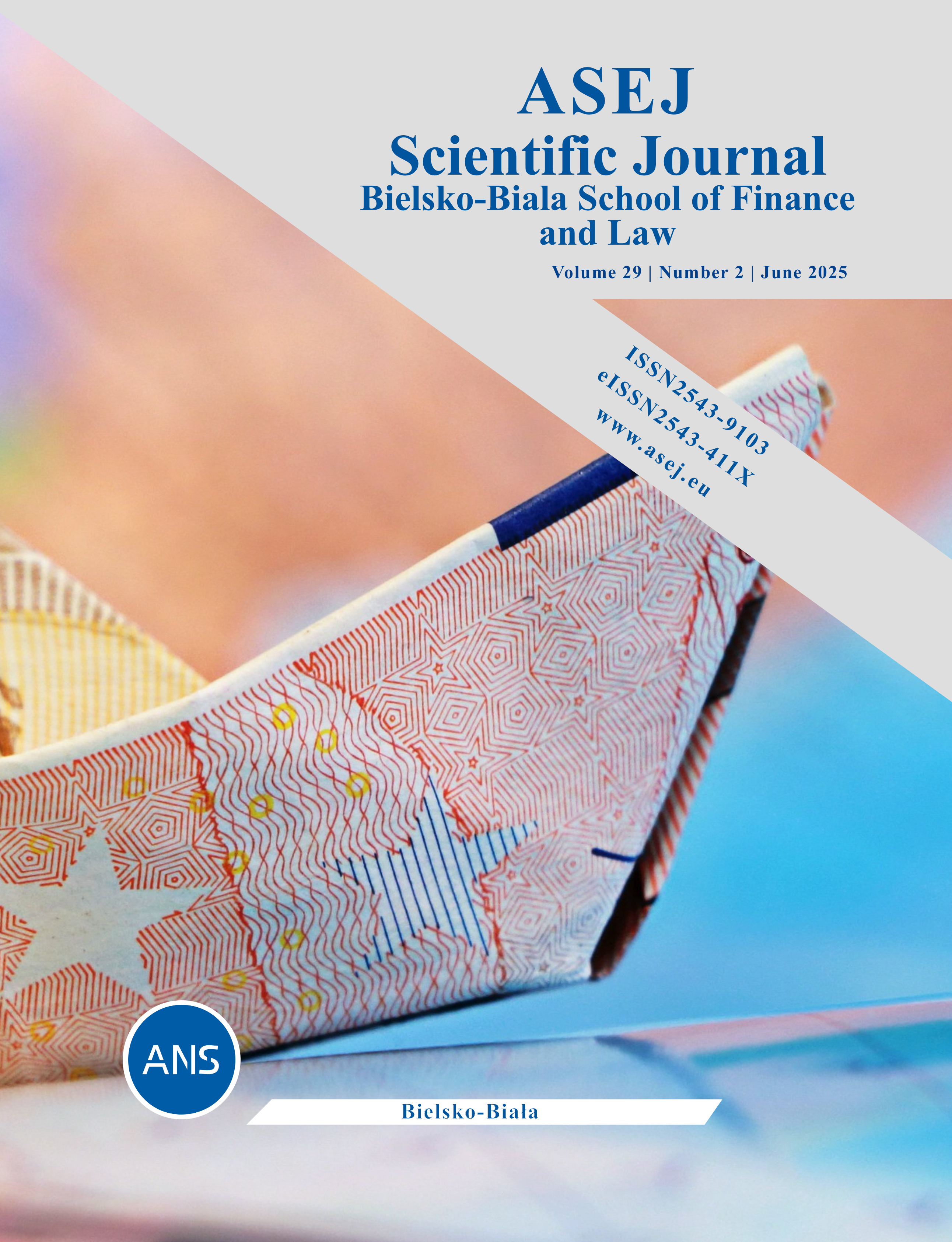Abstract
During the course of the research, it became apparent that there are no regulations and policies in the area of countering the threats posed by unmanned surface and underwater vehicles. Such vehicles can be used for both military and civilian purposes. In the civilian area, they can be used by pirates and terrorists who may be interested in destroying critical infrastructure such as ports and marine terminals, offshore wind farms, mining platforms, underwater installations, etc. On the other hand, they may threaten to destroy sea vessels with cargo, which may change transport routes, alter maritime transport and logistics chains and increase their maintenance costs. As a result, it is necessary to create not only regulations but viable methods and techniques to defend against this new threat to global maritime transportation routes.
References
Banomyong R. The impact of port and trade security initiatives on maritime supply-chain management. Maritime
Policy Management, 2005; Volume 32, pp. 3–13.
Bichou, K.; Bell M. G.H.; Evans A. Risk management in port operations, logistics and supply chain security –
Lloyd’s Practical Shipping Guides, Informa Law, London, 2007.
Bueger Ch. What is maritime security?, Marine Policy, 2015; Volume 53, pp. 159-164.
Buhaug, Ø.; Corbett J.; Endresen O.; Eyring V.; Faber J.; Hanayama S.; Lee D.; Lindstad H.; Mjelde A.; Plsson C.;
Wanquin W.; Winebrake J.; Yoshida K. Second IMO greenhouse gas study. International Maritime Organisation,
London, 2009.
de la Peńa Zarzuelo. I. (2021). Cybersecurity in ports and maritime industry: Reasons for raising awareness on this issue.
Transport Policy. 2021; Volume 100, pp. 1-4.
Directive 2002/6/EC of the European Parliament and of the Council of 18 February 2002 on reporting formalities for ships
arriving in and/or departing from ports of the Member States of the Community (Text with EEA relevance) Official Journal L
, 09/03/2002 P. 0031 – 0045, 2002.
Florczyk R.A. Autostrada celna. Namiary na Handel i Morze, 2015; pp. 14-15. (Polish Version)
Galić S.; Lušić Z.; Skoko I. The role and importance of safety in maritime transportation. International Maritime Science
Conference, Book of Proceedings, Cratia, 2014; pp. 186.
International Maritime Organization, STCW 78, as amended 1995 and 1997, London, 2021.
ISO. Energy Management Systems: Requirements with Guidance for Use (Geneva:ISO). 2011.
Karahalios H.; Yang Z.L.; Wang J. A risk appraisal system regarding the implementation of maritime regulations by a ship
operator. Maritime Policy & Management, 2014; Volume 3-4, pp. 391.
Kilpi V.; Solakivi T.; Kiiski T. Maritime sector at verge of change: Learning and competence needs in Finnish
maritime cluster. Journal of Maritime Affairs, 2021; Volume 20. pp. 610-626.
Klein N. Maritime security and the law of the sea. Oxford & New York, Oxford University Press, 2011.
Klimek H.; Marek R. Żegluga morska wobec zagrożeń piractwem i terroryzmem. Studia i Materiały Instytutu
Transportu i Handlu Morskiego, Zeszyty Naukowe Uniwersytetu Gdańskiego, Gdańsk, 2011; pp. 62-69. (Polish version).
Koch S.J. Proliferation Security Initiative: Origins and Evolution. National Defense University Press Washington,
D.C., 2012; pp. 8-10.
Kraska J.; Pedrozo R. International maritime security law. Leiden and Boston, Martinus Nijhoff, 2013.
Laden M. D ‘The genesis of the US C-TPAT program: lessons learned and earned by the government and trade’.
World Customs Journal, 2007; Volume 1, pp. 75-80.
Mallam S.C.; Nazir S.; Sharma A. The Human Element in Future Maritime Operations-Perceived Impact at
Autonomous Shipping, Ergonomics, 2020; Volume 63, pp. 334-345.
Marek R. A qualitative analysis of using SWIŻB system into creation of Polish Port Community System. Carpathian
Logistics Conference, Zakopane, 2016; pp. 222-228.
Marek R. The Role and place of Customs in Port Community System – experience from Poland. 17th International
Scientific Conference on Business Logistics in Modern Management, Croatia, 2017; pp. 462.
Proliferation security initiative (2003), available online: https://www.state.gov/proliferation-security-initiative/
Raheem A.; Ali N.A.R.; Chebotareva A.A.; Chebotarev V.E. Cyber security in marine transport: opportunities and
legal challenges. Scientific Journal of Maritime Research, Rijeka 2021; Volume 35, pp. 248-255.
Regulation (EU) 2019/1239 of the European Parliament and of the Council of 20 June 2019 establishing a European Maritime
Single Window environment and repealing Directive 2010/65/EU (EMSWe Regulation), 2019.
Ryder G. The International Labour Organization: The next 100 years. Journal of Industrial Relations, 2015; Volume 57,
pp. 48-757.
Stupak T. Influence of Automatic Identification System on Safety of Navigation at Sea, TransNav , Gdynia Maritime
University, 2014; Volume 8, pp. 337—341.
Talaie F.; Javidbakht M. Analysis of the ISPS Code and Its Implementation: Case Study of Malaysia and South
Korea, International Journal of Maritime Policy, 2021; Volume 1 , pp. 119-149.
Tirschwell P. ‘The truth about 10+2’. Journal of Commerce Online,, 2009, available online: www.joc.com/node/409178.,
United Nations Conference on Trade and Development. Review of Maritime Transport, New York and Geneva, 2015; pp. 9.
Widdowson D.; Holloway S. ‘Maritime Transport Security Regulation: Policies, Probabilities and Practicalities’,
Workshop 4: Ensuring a Secure Global Transport System, International Transport Forum, Leipzig, Germany, 2009; available
online: www.internationaltransportforum.org/2009/forum2009.html.
World Customs Organization, WCO SAFE Framework of standards, WCO, Brussels, 2021; available online:
framework-of-standards.pdf, (

This work is licensed under a Creative Commons Attribution-NonCommercial 4.0 International License.
Copyright (c) 2025 Robert Marek

